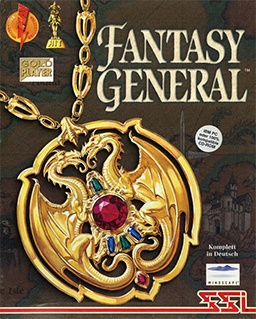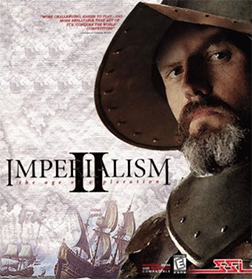https://www.gamedeveloper.com/design/revisiting-the-design-of-civ-5
"
Combat
By far the most significant change I made with
Civ 5 was to way in which wars were fought. Instead of large stacks of units crashing into one another as had always been the case in the previous
Civ games, there was now 1UPT (one unit per tile). This forced players to spread out their armies across the landscape, instead of piling everything into a single tile.
This was a model very much inspired by the old wargame
Panzer General. On the whole, I would say that the combat mechanics are indeed better in
Civ 5 than in any other entry in the series. But as is the theme of this article, there’s a downside to consider as well.
One of the biggest challenges unearthed by 1UPT was writing a competent combat AI. I wasn’t the one who developed this particular AI subsystem, and the member of the team who was tasked with this did a great job of making lemonade out of the design lemons I’d given him. Needless to say, programming an AI which can effectively maneuver dozens of units around in extremely tactically-confined spaces is
incredibly difficult.
The reason why this wasn’t an issue in
Panzer General was that their AI didn’t actually need to
do anything. It was always on the defensive, and a large part of that game was simply solving the “puzzle” of how to best crack open enemy strongholds. It was plenty sufficient if your opponents simply ordered a single tank to stir up some trouble every so often.
What made
Panzer General fun was you blitzkrieg-ing through Europe while your enemies quickly and dramatically fell before your might. However, in a
Civ game, the AI has to be capable of launching full-scale invasions, sometimes on different landmasses. Needless to say, we’re talking about a challenge on completely different scale.
Speaking of scale, another significant issue with 1UPT was that the maps wasn’t really suited for it. The joy of
Panzer General was pulling off clever maneuvers and secretly encircling your helpless enemies. Unfortunately, in
Civ 5 nasty bottlenecks aren’t uncommon and this tempers much of the natural value added by 1UPT. Ultimately, there just wasn’t enough room to do the fun part.
To address this, I could have done something crazy like added sub-tiles to the existing grid. I really don’t think this would have been a good idea though, as the whole point in having a tiles is that everything happens on the same playing field, which makes it very easy to tell what’s going on. Once you start muddying the waters of what goes where, you lose that clarity and mechanical chunkiness tiles offer. And at that point, you might as well just get rid of them entirely.
Speculation aside, the reality was that the congestion caused by 1UPT also impacted other parts of the game. In every prior
Civ title it was no problem to have ten, fifty or even a thousand units under your control. Sure, larger numbers meant more to manage, but hotkeys and UI conveniences could alleviate much of the problem. But in
Civ 5, every unit needed its own tile, and that meant the map filled up pretty quickly.
To address this, I slowed the rate of production, which in turn led to more waiting around for buckets to fill up. For pacing reasons, in the early game I might have wanted players to be training new units every 4 turns. But this was impossible, because the map would have then become covered in Warriors by the end of the classical era. And once the map fills up too much, even warfare stops being fun.
So
is there a way to make 1UPT
really work in a
Civ game? Perhaps. The key is the map. Is there enough of room to stash units freely and slide them around each other? If so, then yes, you can do it. For this to be possible, I’d think you would have to increase the maximum map size by at least four times. You’d probably also want to alter the map generation logic to make bottlenecks larger and less common. Of course, making the world that much bigger would introduce a whole new set of challenges!
In fact, there were technical reasons this wasn’t really feasible – our engine was already pushing up against the capabilities of modern computer hardware. Drawing that many small doo-dads on a screen is really expensive, trust me. Well, unless you make your game 2D, like
ATG!
Speaking of which, what
about combat in
ATG? Well, for one thing the game will allow for stacks of units!
The main reason for this is one of my high-level goals for the game. As I touched upon earlier,
ATG is designed to be a strategy title which takes place primarily at the strategic level, rather than the tactical. The region of the map where you’ve stationed your armies, how well you’ve prepared your supply network, etc. is ultimately more important than if you were able to wheel one of your infantry around the flank of another enemy infantry unit.
A major factor in this decision was ensuring all of
ATG’s features integrate with its most important one: map evolution. My objective is really to play this up in every way possible. With combat, this is done through the supply system. Units which lack sufficient supply rapidly become useless, similar to
Unity of Command.
Every tile has a certain amount of supply available for units stationed there. The largest fraction of this comes from the tile’s terrain type which, of course, changes radically with the seasons. The remaining fraction comes from the effect of nearby supply camps and settlements.
And supply is what the entire military side of the game is geared around – Planning ahead to make sure you have enough of it. Fighting in areas which have a lot of it. Ensuring that your supply nodes are safe, and so on.
In fact, the units themselves are almost a secondary concern.
ATG is not a game where you follow the epic tale of a single warrior as he levels up and upgrades through the various technological eras. Instead, it’s more like a late-game chess match, when nearly any move can settle the battle, and a pawn in the right situation can be just as powerful as a queen.
No doubt, this is a very different approach from the one taken in
Civ 5. However, by now it should be obvious that
ATG is in
no way
Civ 5, but instead stands on its own as a unique and innovative new member of the 4X family!"









